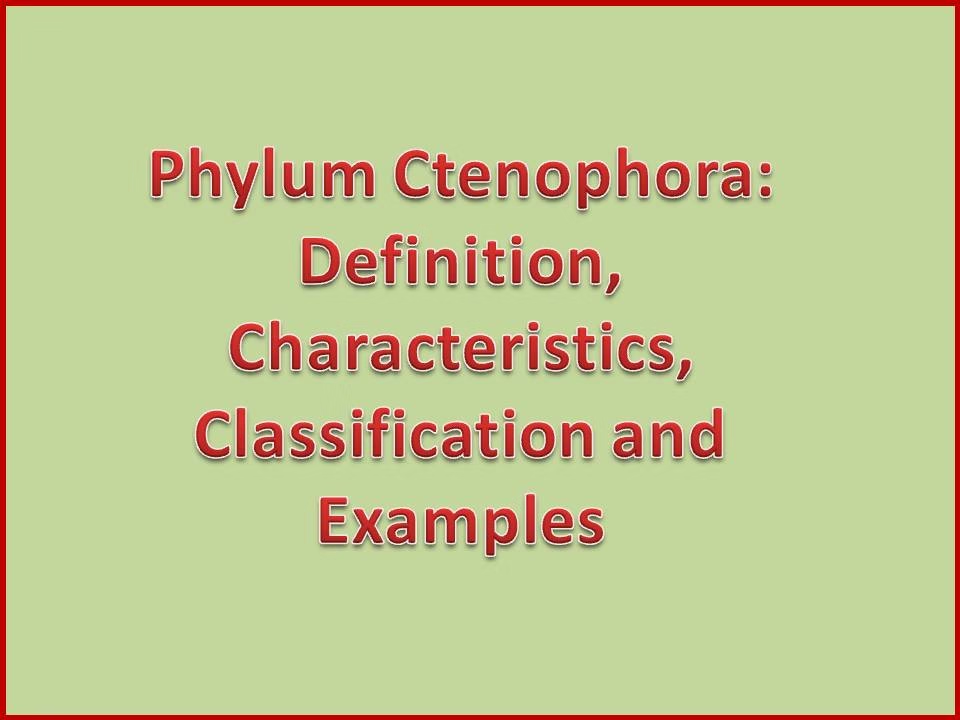Phylum Ctenophora
Phylum Ctenophora (Gr., kestos=comb; phoros=bearing) is a group of marine invertebrates commonly known as comb jellies. These organisms are characterized by their gelatinous bodies, biradial symmetry, and the presence of eight rows of ciliary plates (combs) that they use for locomotion. Unlike jellyfish, which belong to Phylum Cnidaria, ctenophores lack stinging cells (cnidocytes) and instead capture prey using sticky cells called colloblasts.
General Characteristics of Phylum Ctenophora
- Solitary and pelagic forms.
- Acoelomate and triploblastic animals having biradial (radiobilateral symmetry).
- Body delicate, transparent, gelatinous and unsegmented.
- Body usually pear-shaped, cylindrical or flat or ribbon-like.
- Tentacles are long and two and protrude from tentacular sheath.
- Nematocysts are entirely absent.
- Locomotory organs are eight meridional rows of comb-like structures formed by the fusion of cilia.
- Circulatory, excretory, respiratory and skeletal systems are absent.
- Gastric filaments are absent.
- Single sense organs on the aboral pole.
- Hermaphrodite.
- No alternation of generation.
CLASS 1. TENTACULATA
- Body simple rounded or oval or ribbon-like.
- Two long aboral tentacles retactile into sheaths.
- Mouth narrow and pharynx small.
Order 1. Cydippida
- Body oval or rounded.
- Two long branched tentacles retractile into sheaths.
- Branches of gastrovascular system terminating blindly.
- Examples: 1. Hormiphora, 2. Pleurobrachia.
Order 2. Lobata
- Body laterally compressed.
- Two large oral lobes or lappets and four pointed processes or auricles.
- Tentacles many, non-retractile without sheaths.
- Stomodaeal and meridional vessels unite with one another.
- Examples: 1. Deiopea, 2. Bolinopsis.
Order 3. Cestida
- Body laterally compressed and ribbon-like in form.
- Two main tentacles reduced, enclosed in sheaths, many lateral tentacles.
- Four rows of comb plates are rudimentary.
- Meridional and stomodaeal vessels anastomose.
- Examples: 1. Cestum, 2. Velamen.
Order 4. Platyctenea
- Body worm-like and compressed in oral-aboral axis.
- Tentacles with sheaths are present.
- Comb rows or swimming plates are present only in larva.
- No meridional canals but there is a system of branching peripheral system.
- Examples: 1. Ctenoplana, 2. Coeloplana, 3. Tjalfiella.
CLASS II. NUDA
- Body large thimble-shaped or conical.
- Tentacles absent.
- Mouth wide and pharynx large.
- The meridional vessels are produced into a complex system of anastomosing branches.
Order 1. Beroida
- Characters same as in the class.
- Example: Beroe.
